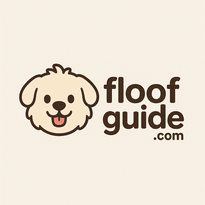Joining the Pack: A Guide to Introducing Your Dog to Other Dogs
So, you're ready to expand your furry family! Introducing a new dog to an existing pack can be an exciting but also potentially stressful time for everyone involved. The key is to take it slow, be patient, and prioritize safety. This guide will walk you through the process, step-by-step, to help ensure a smooth and happy transition for all your canine companions.
Before the Big Day: Preparation is Key
- Assess Your Existing Dog(s): Understand their personalities. Are they generally friendly with other dogs? Do they have any known triggers (e.g., resource guarding, reactivity to certain breeds/sizes)? This will help you anticipate potential challenges.
- Health Check: Make sure your new dog and all existing dogs are up-to-date on vaccinations and parasite prevention. A vet visit is a must before any introductions begin.
- Neutral Territory: Choose a neutral location for the initial meeting, such as a park or a quiet street. Avoid your home or yard, as existing dogs may feel territorial.
- Leashes are Essential: All dogs should be on leashes for the first several encounters. This gives you control and allows you to separate them quickly if needed.
- Gather Supplies: Bring high-value treats for positive reinforcement, poop bags (of course!), and water.
The First Meeting: Keeping it Calm and Controlled
- Parallel Walking: Start with parallel walking. Have each dog on a leash, held by a separate person, and walk them side-by-side at a distance where they are aware of each other but not reacting. This allows them to get used to each other's presence without direct interaction. Keep the leashes loose and avoid any tension.
- Brief Sniffs: If the dogs seem relaxed and curious, gradually decrease the distance between them. Allow for brief, controlled sniffs, but don't force interaction. Watch for signs of tension or discomfort.
- Keep it Short and Sweet: The first meeting should be brief – 10-15 minutes is plenty. End the interaction on a positive note, even if the dogs are just tolerating each other. It’s better to leave them wanting more than to push them past their comfort zone.
Recognizing Body Language
Learning to read dog body language is crucial during introductions. Watch for these signs:
- Relaxed: Loose body posture, wagging tail (not stiff), relaxed mouth.
- Anxious/Fearful: Tucked tail, lip licking, whale eye (showing the whites of their eyes), yawning (when not tired).
- Aggressive: Stiff body, raised hackles, growling, snapping, showing teeth.
If you see any signs of anxiety or aggression, immediately separate the dogs and increase the distance between them.
Gradual Integration: Taking it One Step at a Time
- Repeat Meetings: Continue with parallel walking and brief sniff sessions for several days, gradually increasing the duration and decreasing the distance between the dogs.
- Off-Leash Time (Controlled Environment): Once the dogs are consistently relaxed around each other on leashes, you can consider short off-leash interactions in a securely fenced area. Keep a close eye on them and be prepared to intervene if necessary.
- Introduce the Home: Gradually introduce the new dog to your home, starting with short supervised visits. Provide separate spaces for each dog, such as their own beds or crates, where they can retreat if they feel overwhelmed.
- Supervise, Supervise, Supervise: Even after the initial introduction period, continue to supervise interactions between the dogs, especially during feeding time or when toys are present. Resource guarding is a common issue, so prevent it by feeding them separately and managing access to toys.
Managing Resource Guarding
- Separate Feeding: Feed all dogs in separate locations to avoid competition and resource guarding around food.
- Toy Management: Put away high-value toys that might trigger guarding behavior, especially during the initial integration period.
- Teach “Leave It” and “Drop It”: These commands can be invaluable for managing resource guarding situations.
Patience is a Virtue
Introducing a dog to a pack takes time and patience. Don't rush the process, and be prepared to adjust your approach as needed. Some dogs may bond quickly, while others may take weeks or even months to fully integrate. Remember to celebrate small victories and focus on creating a positive and harmonious environment for all your furry friends. If you are struggling or notice any signs of aggression that you cannot manage, consult with a professional dog trainer or behaviorist.

